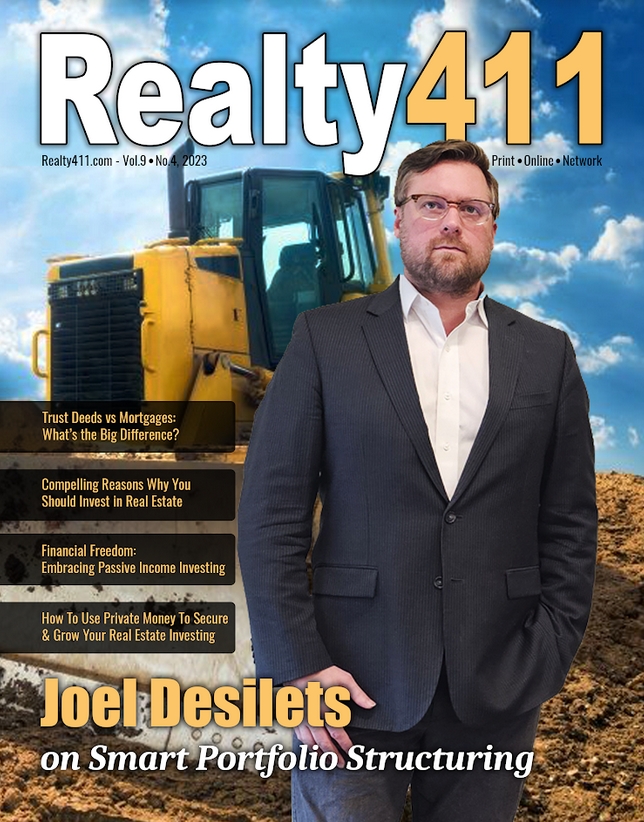Are you FUNDABLE, or Do You Just Have a Good Score?
Lenders only make money when they lend, right?
Well, you would’t know it from the way lenders keep borrowers in the dark about how to be a good borrower and qualify to borrow their money! You would think that lenders would be bending over backwards to teach, coach, and instruct borrowers on how to be a good borrower. We are simply told we need a good credit score.
As a result, anyone who wants to borrow money is obsessed with their credit score. The problem is borrowers have been led to believe that their credit scores are the chief determining factor to getting approved for credit—and it’s not true.
My intention in this article is to disclose some of the things I have learned over the last 25 years as a credit and funding expert. Many of these “secrets” revolve around what I call “fundability.” Fundability is far more than a credit score. Fundability is the composition and quality of your entire financial situation as represented by your credit “profile” such that a lender finds you attractive and desirable enough to extend you credit. As I have learned, fundability is measured by three major factors: credit score, credit profile quality, and underwriting criteria. Let’s take a look at each of one of them.
There are certain fundamental aspects of credit scoring that ARE important. The first of these is that your credit score, for it to be fundable, needs to be a FICO® credit score. Most borrowers are unaware of the difference between a FICO® credit score and what I call FAKE-O™ credit scores.
A FICO® credit score is a three digit score that is generated by filtering the data of one of the credit bureaus through a specific algorithm created by Fair Issac Company (FICO®). FICO® scores fall into two categories: the first is called an “unweighted” score and grades the raw data of your credit profile. This unweighted score is the score that lenders and creditors provide as part of their credit card offers. However, this score (even though it is a FICO® score) is NOT a score that is used by lenders to evaluate your fundability.
The second category of FICO® scores is what is called “industry-specific” scores. They are also know as “weighted” scores, because they are weighted for the particular industry where you are applying for credit. For example, if you’re looking to purchase a vehicle, the lender or dealership will be using FICO® software that weighs your previous auto loan reputation. If you have a good payment history, your score will be higher than your unweighted scores, but if you had a missed payment or repossession, then your auto score may be lower than your unweighted score. Industry-specific credit scores include auto scores, mortgage scores, credit card scores, etc.
So while you have been trained by the financial world to be score sensitive, no one has taught you the difference between FICO® and FAKE-O™ scores. If it does not have the FICO® registered trademark it is not a legitimate score—NO lender will lend on it. I hate (not really—just being polite) to inform all of you that the credit scores offered on sites like CreditKarma.com, etc. are FAKE-O™ scores and are not used by lenders to extend you credit. The best place to acquire your true FICO® credit scores is myFICO.com. It offers both unweighted and industry-specific scores. Another feature to the credit report you get from myFICO.com is that it also contains credit scores calculated using various versions of the FICO® scoring software so that you can see what the lenders see—regardless of which software version a lender uses.
Whaaaaa?
As with all software, there are versions that are more recent and and there are versions that are older. The challenge is that when you go to a lender and submit an application, you do not know what version of the FICO® software they are using. To add insult to injury, when you pull your myFICO®.com credit report, you will see that there can be as much as a 20 to 70 point difference between scores generated by the different software versions. And each version grades the exact same data on your credit profile!
What’s more disturbing still is that lenders do not educate borrowers about the complexities of credit so that they can make intelligent borrowing decisions. Of course, we are not schooled in these credit vagaries. We are told only to pay our bills and we’ll have a good credit score. The secret is that “paying your bills” on time is only one of 40 activities on your credit profile that FICO® measures. Once again, our ignorance of those other 39 criteria leaves us in mystery as to how to positively affect our fundability and our credit approvals.
The second contributing factor to your fundability is the quality of your credit profile. Your credit profile breaks down into five distinct areas: your identity, your revolving accounts portfolio, your installment loans portfolio, inquiries, and derogatory or negative indicators (late pays, collections, liens, judgments, and other types of score limiting data). Let’s take these one at a time.
Your personal credit identity is the single most important feature of a high-quality credit profile. Lenders, credit bureaus, and FICO® do not think of you as a person in the traditional sense. You are an identity—a data set that they can quantify and track. Since you were never taught how to correctly apply for credit, you probably applied using various versions of your name and different addresses. Since the credit bureaus collect every scrap of data you submit in your applications, they have a record of every version of your name, every address you’ve ever applied under (even Aunt Mae’s where you spent the summer). Credit bureaus do this so they can collect and merge all your data to better identify you. The bureaus have spent tens of millions in data development and management, when it seems to me that it would just be simpler for them to instruct borrowers how to establish a credit identity and use it consistently when borrowing. But alas, such is not the case. One of the first things you will see when you pull you’re myFICO.com credit report is the veritable mess of inconsistent information that is listed under your personal information section (credit identity). It is vital that you present a single, clear, and concise identity to your current creditors as well as any future lenders.
The second area that contributes to a high-quality credit profile is what I call your “revolving accounts portfolio.” This is the collection of all of your revolving accounts: credit cards, credit lines, charge cards, and HELOCs (home equity lines of credit). The most important score contribution to you’re revolving accounts portfolio is your balance to limit ratio (known in the industry as utilization), followed by the average age of your revolving accounts portfolio. Next priority is the quality of each individual account. Quality is defined by the “tier” of the lending institution and the contribution of the account to the quality of the profile. While I can’t go into great detail here, you need to know credit instrument quality ranges from Tier 1 banks and 100% contribution to Tier 4 lenders and 40% contribution. Until now, we were never trained on how to build a high-quality fundable credit profile and so many of us have low-value “junk” cards which show a lender a lack of credit sophistication.
The third area of a high-quality credit profile is your installment loan portfolio. As with your revolving account portfolio, you can have a Tier 1, 100% quality loan, and you can have a Tier 4, 40% quality loan. The quality of the loan contributes to or detracts from the quality of your credit profile and the quality of your credit profile determines your fundability.
The next contributor to a high-quality credit profile are your inquiries. Inquiries count against your credit score for 12 months, but what we were not told is that the inquiries count against underwriting and fundability for 24 months. FICO® and lender underwriting software downgrade your fundability significantly when you have too many inquiries. How many is too many? FICO® allows one inquiry per six months without a significant degradation of your credit score or fundability.
After one inquiry per six months, there is a steep point-loss curve as you incur more inquiries. Additionally the quality of the accounts you are applying for will impact your credit profile. Finance companies, mall store cards, and other low-grade credit instruments have a greater negative impact against your score than higher tiered credit instruments.
Finally, the most powerful negative contribution to your profile and fundability is the presence of derogatory accounts or other negative indicators. The credit repair industry has increased borrower awareness about the negative impact of bad credit. Unfortunately, credit repair is not a solution that will help your fundability. Credit repair companies offer a meager dispute letter writing campaign in the hopes of removing a few negative accounts. While the removal of these accounts may improve your score a little, it does not improve the essential nature of your fundability as we’ve described in this section—credit repair does not help you build a powerful FUNDABLE credit profile.
By definition credit repair strategies and those service providers who offer them, are completely ignorant of fundability and do not know how to create a credit profile that will contribute to credit approvals. In fact, most credit repair firms, in a feeble attempt to help their clients “rebuild” their credit, refer them to low-value junk credit instruments, etc. These junk cards pay referral fees so the credit repair company wins, but the clients take another hit to their credit. It is a travesty how much ignorance there is among organizations who say they are trying to help disadvantaged borrowers.
Let’s take a look now at the final fundability factor: underwriting. Underwriting software expands the requirements of fundability significantly. Since it is the lender that is actually extending the credit (and carrying all the risk), lenders have developed (in concert with FICO®) their own underwriting criteria and software.
Underwriting software takes into account credit score, income, debt load, current banking relationship (checking account, average daily balance, recency of last bounced check) and the 24 month look-back period. Underwriting software calculates behaviors over the preceding 24 months and measures it in a logarithmic scale. A borrower’s behavior over the last 24 months is the key indicator of what the borrower’s behavior will be for over the next 24 months. The 24-month look-back period cannot be underestimated in its importance to your fundability.
The next time you are at a cocktail party or social gathering and someone tries to dazzle you with their credit savvy, politely interrupt them and ask them to share their understanding of ANY of the topics you have learned in this article. When they stutter and hum and ha, overwhelm them with all your knowledge about fundability!
Every borrower in this country, and every individual in the upcoming generation needs to learn what we have reviewed here. We cannot remain in our ignorance. We cannot be “at effect” of these billion-dollar organizations who not-so-secretly profit from our ignorance. We need to turn the tables and make ourselves knowledgeable AND fundable. If knowledge is power, then applied knowledge is a superpower.
If you would like to know more about Credit Funding Optimization, go to CreditSense.com/frequently-asked-questions. We also have an exhaustive YouTube channel: YouTube.com/Creditsense. Take a moment and review our website or call us at 801.438.9090. You will find these resources available nowhere else. Read, study, watch, and get empowered with the knowledge that will transform your financial world. And for most of us, when we transform our financial world, the rest of our lives will significantly improve. CreditSense.com offers the only Credit Funding Optimization in existence. It is the only integrated process that optimizes your credit score, your credit profile quality, and your underwriting capacity so that you can become FUNDABLE.
Sincerely,
Merrill Chandler, CEO and Chief Strategist








































